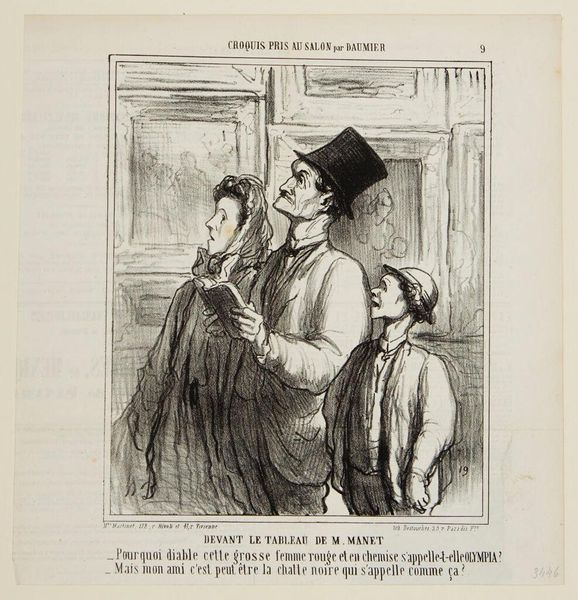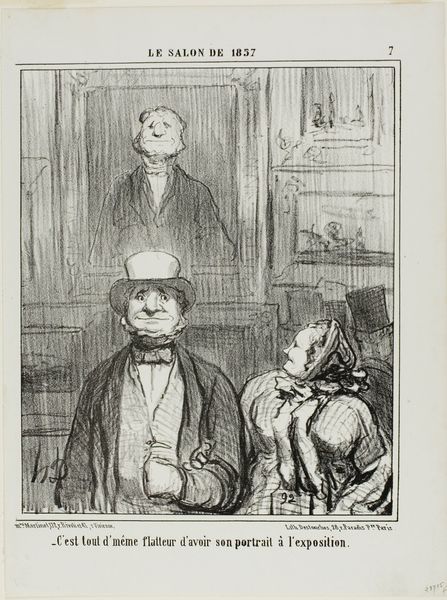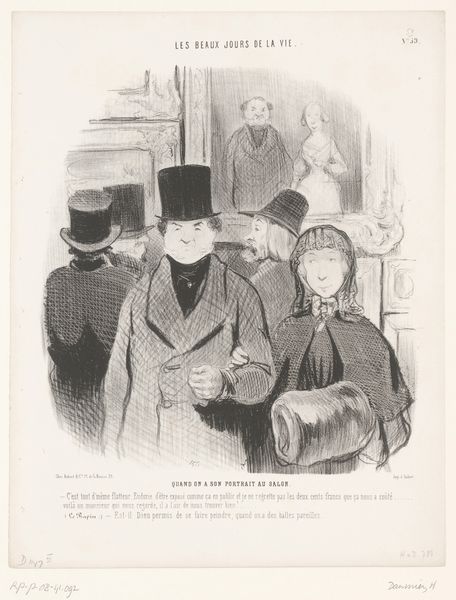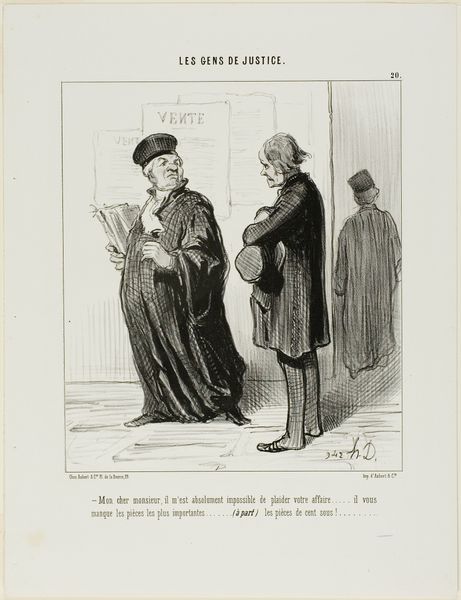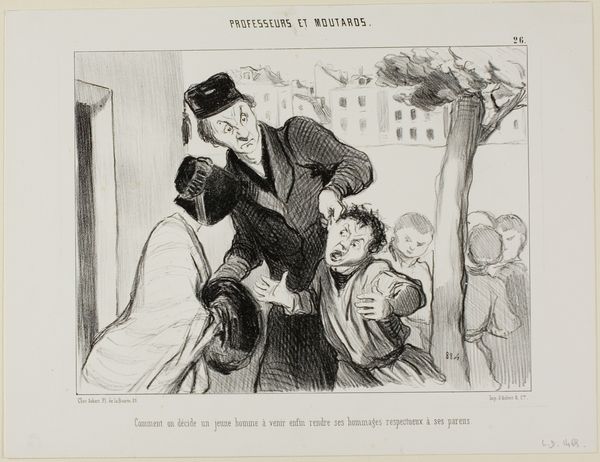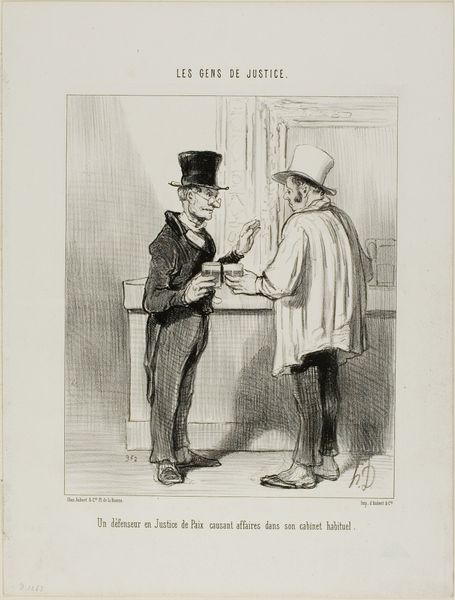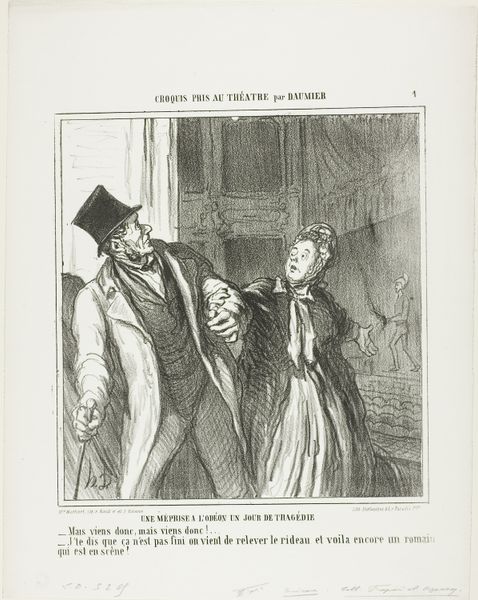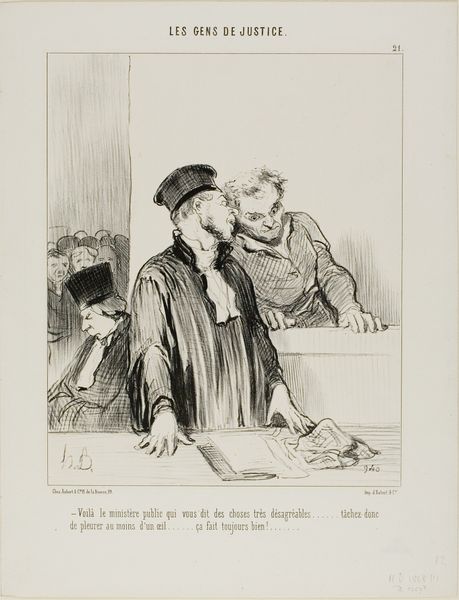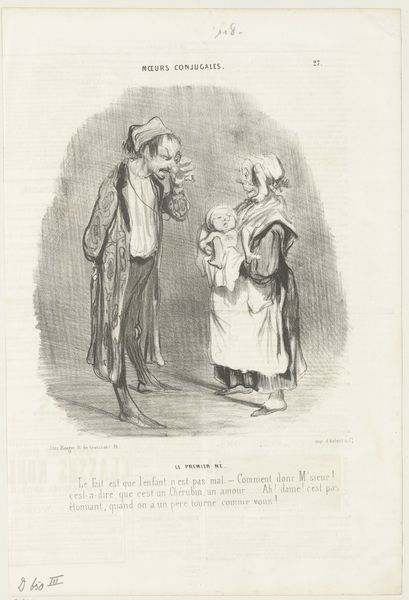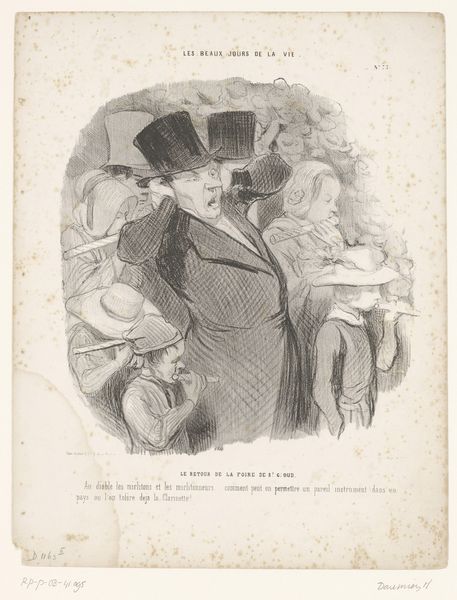
Looking at the Painting of Manet. “- Why the devil is this fat, red-faced woman in her nightdress called Olympia? - But my dear, perhaps that's the name of the black cat," plate 9 from Croquis Pris Au Salon par Daumier 1865
0:00
0:00
drawing, lithograph, print, paper
#
portrait
#
drawing
#
lithograph
# print
#
impressionism
#
caricature
#
figuration
#
paper
#
genre-painting
Dimensions: 228 × 190 mm (image); 353 × 275 mm (sheet)
Copyright: Public Domain
Editor: So, this is Honoré Daumier's lithograph from 1865, titled "Looking at the Painting of Manet." It's a satirical take on viewers observing Manet's "Olympia" at the Salon. The expressions on their faces are quite amusing! What stands out to you when you look at this piece? Curator: For me, it’s fascinating how Daumier uses this image to comment on the evolving role of art and the public’s reaction to it. Manet’s "Olympia" was, of course, scandalous. But Daumier's print captures not just the controversy, but also the burgeoning role of the art critic – both professional and amateur – in shaping public opinion. Notice the figures, their clothing. What social class do you think they represent and how do they reflect the broader debates surrounding modern art at the time? Editor: I’d say they’re probably middle class, dressed respectably, but not extravagantly. Their comments seem to mock the painting, maybe highlighting a sense of confusion or even outrage from the established bourgeoisie about new artistic styles. Do you think Daumier is taking a side? Curator: That's perceptive. Daumier, through his caricatures, was often critical of social norms. While he mocks the figures’ cluelessness, he also subtly critiques the institution of the Salon itself and its role in legitimizing (or not legitimizing) art. It is a social commentary as much as art criticism. It prompts us to think about how institutions mediate our understanding of art. What do you make of the original negative critics of the art piece 'Olympia'? Editor: Interesting! So, it’s a snapshot of a moment in art history where public opinion, the art world, and social class tensions were all colliding. I never thought a simple drawing could have so much to say about society itself. Curator: Precisely. Daumier used his art to dissect the cultural landscape of his time, reminding us that art is always intertwined with the socio-political forces around it. Editor: It changes my view completely; it’s not just about "Olympia", but about what the painting represented for society. Curator: Absolutely! It opens up many interesting angles for debate and consideration!
Comments
No comments
Be the first to comment and join the conversation on the ultimate creative platform.
